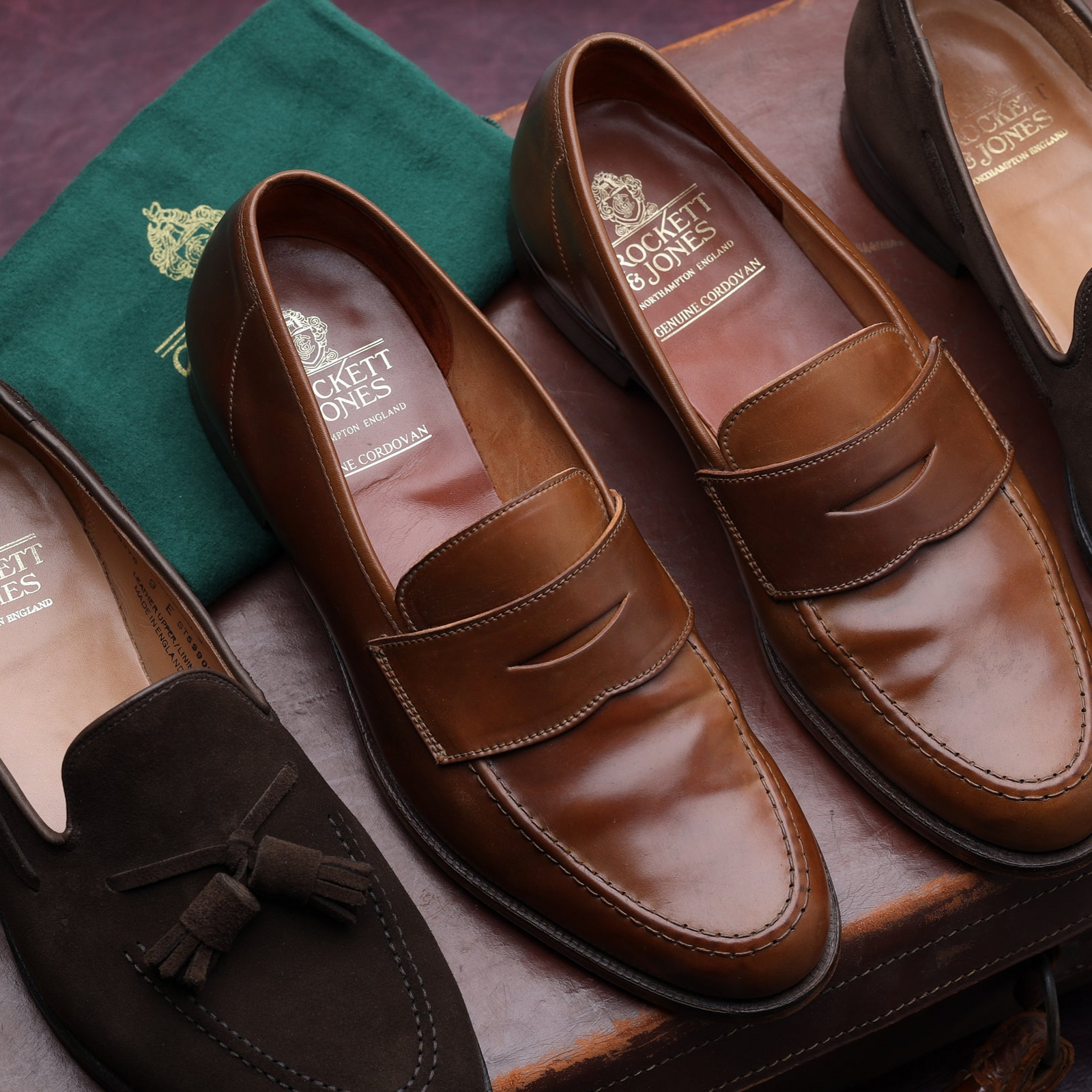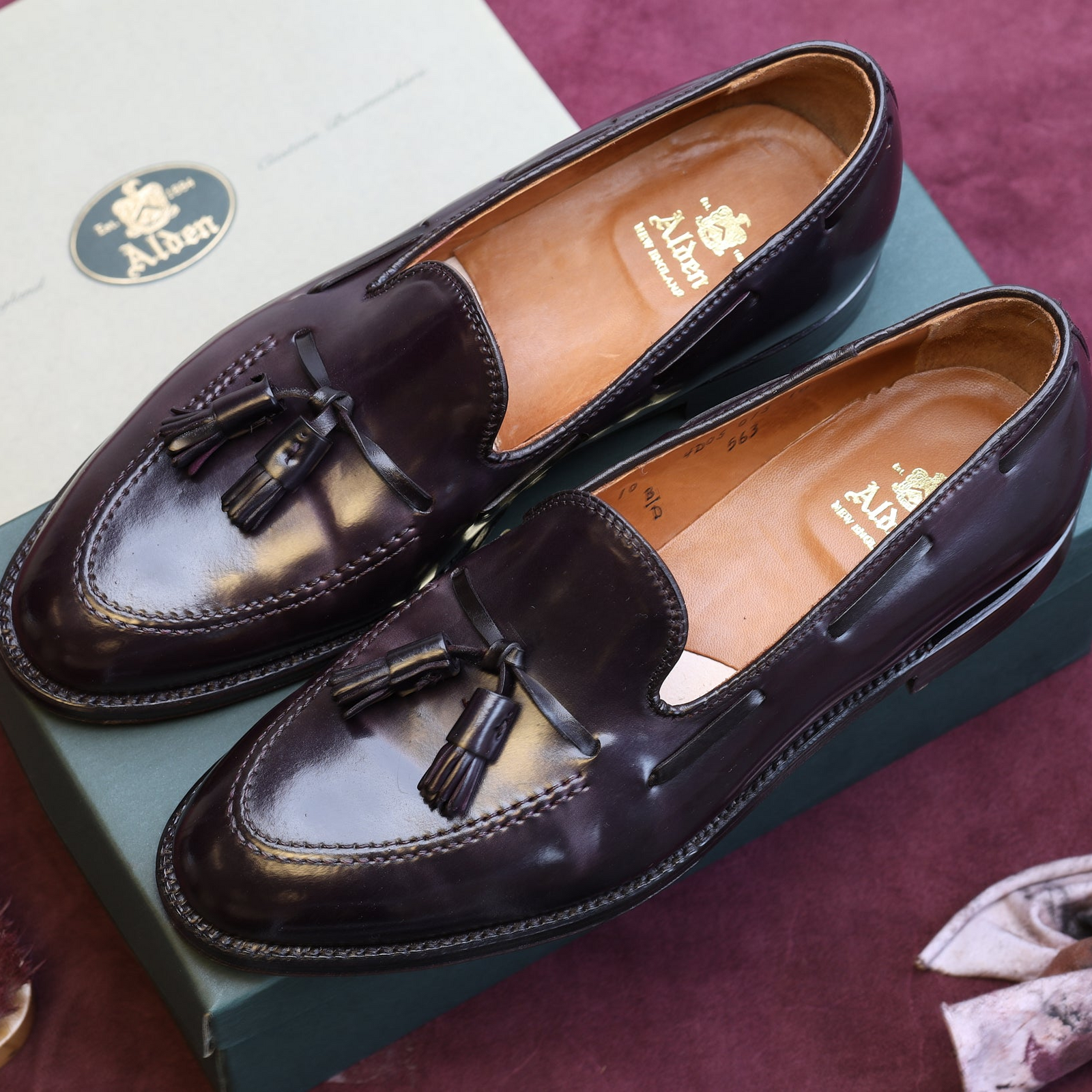Welcome to the Abbot's Edit, our new monthly deep-dive into the world of fine footwear. Our first edit we're taking a look at a seasonal silhouette with an international story. The loafer is a timeless symbol of ease, elegance, and enduring style—but its story begins in some unexpected places, and in fact its origins are disputed.
British family shoemakers Wildsmith claim to have designed the first loafer, the renowned Model 98, for wear by the Royal Family. However, it's thought that the style dates back earlier to 19th century Norwegian fishermen, whose unique, functional leather slip-ons English sportsmen noticed while visiting the country to fish for Salmon.
The style lay largely dormant until 1930, when Norwegian shoemaker Nils Tveranger introduced the Aurland moccasin (later Aurland Shoe), inspired by the traditional moccasin-like shoes worn by the people of Aurland and Indigenous American tribes of North America where he had learned the shoemaking craft.
Meanwhile in the United Kingdom, similar shoes were already being designed. In the 1920s, a casual slip-on shoe was made for King George VI to ‘loaf around’ in, hence the term that we use today. Indeed, there had been comparable styles of footwear in the UK & Europe since the 16th century as ‘court shoes’, those being Opera Pumps, the more formal black tie equivalent of a loafer. In this way the loafer represented a more casual, versatile progression for an already sleek silhouette.
The shoe spread across Europe and eventually to the U.S., where it was then picked up by EsquireMagazineand re-fashioned by American manufacturer G.H. Bass in the “Weejun” - a play on “Norwegian”, adding a distinctive strap across the vamp with a small slit, where some wearers would later tuck in a coin, giving rise to the term “penny loafer.”
Initially marketed as a casual shoe, the Weejun became a staple among Ivy League college students in the 1950s and ‘60s. These loafers, worn sockless with chinos or cuffed jeans, helped define the “preppy” look and secured the loafer’s place in American style.
While across the pond it was paired with casual stylings, in Europe, designers were elevating the loafer into something more refined. Italian fashion houses like Gucci reimagined the loafer in the 1950s and introduced the now-iconic horsebit loafer—a sleek silhouette only released in black, as brown was thought too casual—with a metal snaffle bit across the top as a nod to equestrian heritage. It’s connotations of class & luxury meant that the Gucci loafer became a symbol of sophistication, worn by figures like Gianni Agnelli, John F. Kennedy, and other Hollywood icons.
Having graduated from the Ivy League ranks, the loafer took another step towards sophistication with the tassel loafer, which is said to have originated from a commission by actor Paul Lukas, who asked Alden Shoe Company to replicate a pair of Oxford shoes with tassels in a slip-on style in the late 1940s.
The tassel loafer gained popularity in professional circles, striking a balance between the informality of the penny loafer and the polish of a dress shoe. By the sixties it had become the unofficial footwear of American lawyers, bankers, and academics.
While many formal shoes follow similar construction principles, loafers present some different design challenges that set them apart.
Lower Profile & Lightweight Feel: Loafers tend to have a lower heel and sleeker silhouette. This demands careful attention to balance and shaping, as there’s less structure to hide inconsistencies. Achieving a lightweight feel without sacrificing durability is key.
Specialist Upper Techniques: Many loafers feature decorative stitching, apron fronts, or hand-sewn moccasin-style seams. These details require more hand-finishing and specific skills not always needed in other types of shoes.
Different Construction Methods: Loafers may use Blake stitch or cemented construction more frequently than traditional Goodyear welt, making them more flexible and low-profile. Some luxury loafers still use Goodyear welting for added durability while maintaining a sleek aesthetic.
The true joy of the loafer is in its versatility - from tassel to horsebit to the penny, loafers straddle numerous social groups & styles, working well with a range of looks. Loved by Ivy Leaguers, businessmen and casual wearers alike - loafers have graced classrooms, boardrooms & streets with equal aplomb.
We stock a huge range of loafers from the World’s finest shoemakers, including Church’s, Crockett & Jones, Tricker’s, Tod’s and many more - shop our full collection of loafers below.
The festive season brings with it a calendar full of moments worth dressing for - from slow Christmas mornings to winter walks and end-of-year celebrations that call for something a little more refined. While outfits may evolve throughout the holidays, the right footwear remains constant, grounding every look in comfort, quality, and craftsmanship.
In this edition of The Abbot’s Edit, our festive footwear planner takes you from the lead-up to the big day right through to the New Year, highlighting enduring styles designed to see you through the season in effortless style.
In this edition of The Abbot’s Edit, we’ll explore what makes shoe leathers so special: the different types of leathers, the grains and varieties, and the famous tanneries that supply the world’s finest footwear.
Welcome back to The Abbot’s Edit, in this edition we turn our attention to what lies beneath. From traditional leather to modern sustainable rubber compounds, the sole defines comfort, durability, and style. Choosing the correct type for the intended purpose is key to making an investment-worthy purchase, read on as we tread carefully through the pros and cons of each.

